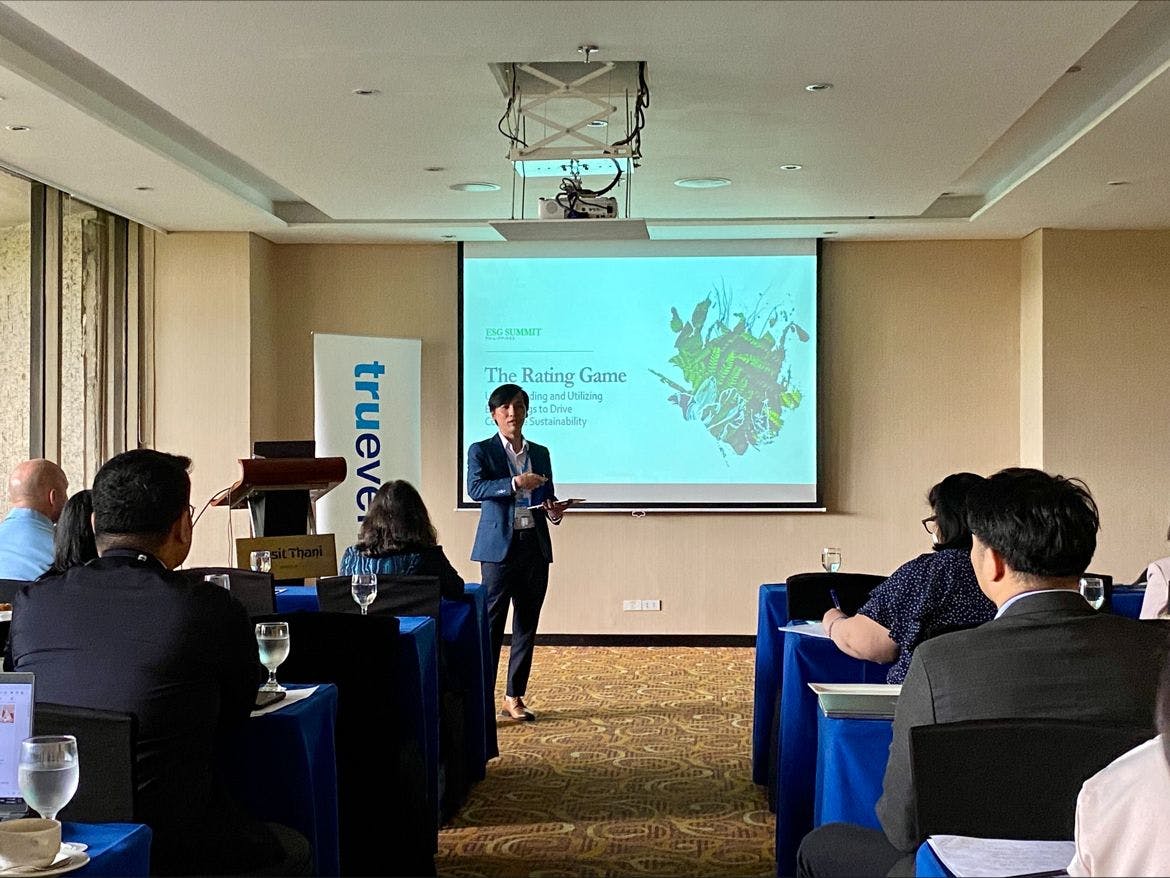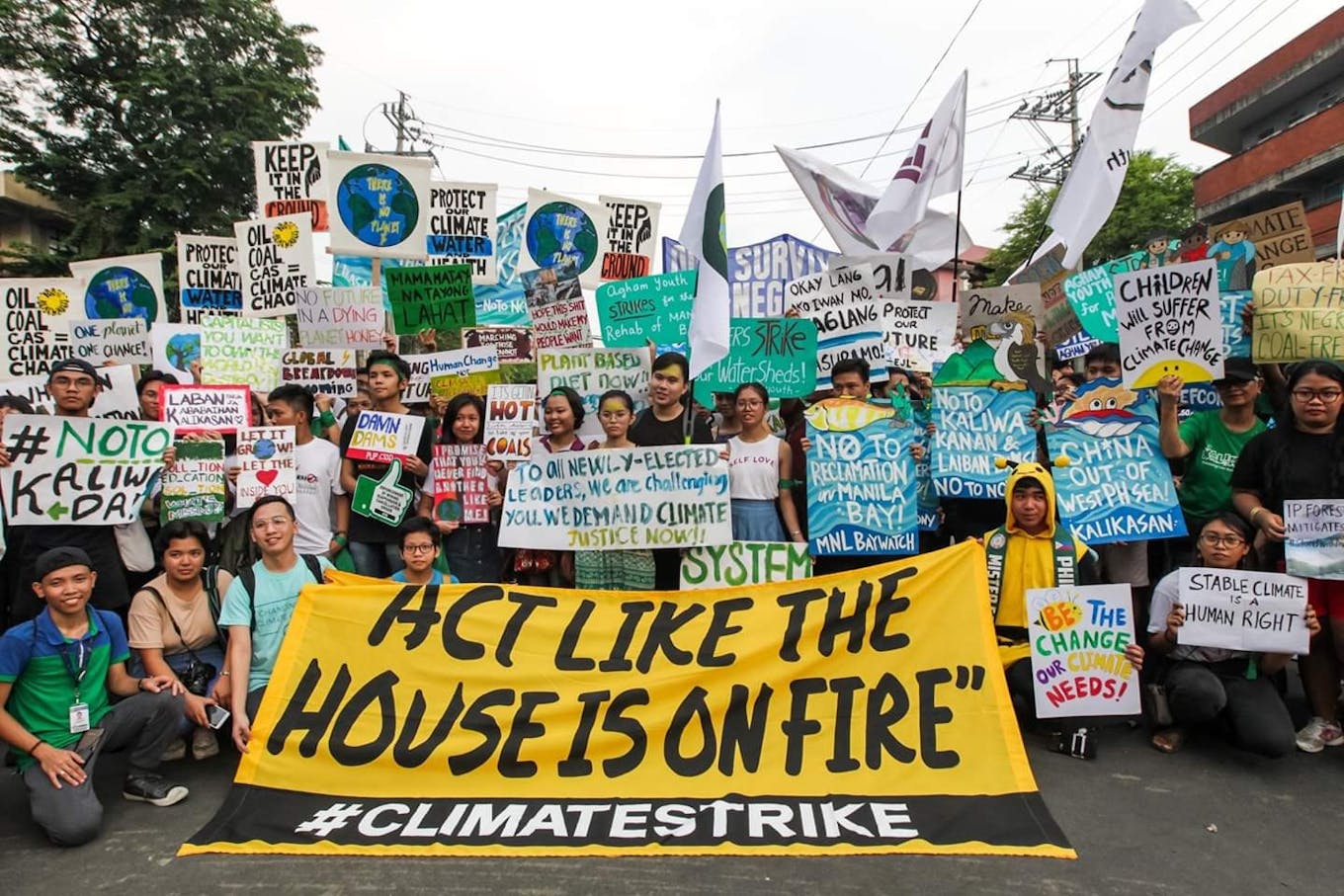Niels Gabriel Nable has been getting nightmares for the past three years, usually involving natural disasters like earthquakes, volcanic eruptions, strong typhoons and tsunamis.
To continue reading, subscribe to Eco‑Business.
There's something for everyone. We offer a range of subscription plans.
- Access our stories and receive our Insights Weekly newsletter with the free EB Member plan.
- Unlock unlimited access to our content and archive with EB Circle.
- Publish your content with EB Premium.
The 25-year old former climate activist has consulted a therapist for his feelings of helplessness and fear caused by climate change, but he has come to terms that his eco-anxiety is what fuels him in his role as the head of sustainability reporting and partnerships at the Manila Electric Company (Meralco), the largest private sector electric distribution utility company in the Philippines.
“I know it sounds very bleak and depressing but knowing that we are all on borrowed time in terms of our climate ambition, and that the issues that we face as a society will only get more serious and complicated over time – that keeps me awake at night,” Nable told Eco-Business.
When he started in his role in September 2021, Nable was responsible for enhancing Meralco’s environment, social and governance (ESG) transparency by aligning the company’s sustainability disclosure with globally-recognised ESG reporting standards and best practices for the first time.
Under Nable’s leadership, Meralco was included last year by United Kingdom-based FTSE4Good Index Series, a set of global sustainability indices that measure the performance of companies in key ESG areas such as climate change, labour standards and anti-corruption. The firm also saw upgrades in other ESG ratings like the Bloomberg Gender-Equality Index, for its disclosures on gender pay gap, as well as its S&P Global Corporate Sustainability Assessment Score, CDP Climate Change Score, and MSCI ESG Rating.
Nable also spearheaded the company’s first greenhouse gas accounting initiative, the output of which was used as a baseline to set the company’s 2030 emissions reduction targets of a 27-per-cent decrease in Scope 1 and 2 or direct and indirect purchased emissions emissions by 2030.
Nable’s efforts to promote transparency in sustainability reporting won him a place on the Eco-Business Youth A-List 2022, which recognises young sustainability professionals making an impact in Asia Pacific.
In this interview, he talks about the downside of his youth in a corporate setting – and why it is also the biggest part of his success.

Niels Nable shares insights with fellow sustainability practitioners at the ESG Summit Philippines held in February. Image: Niels Nable
What is the most difficult part of being the youngest manager in a corporate landscape dominated by more senior executives?
The biggest challenge is how to communicate and influence senior leaders within the organisation with respect to sustainability.
Whenever I meet with senior leaders, I sometimes feel that they don’t particularly value what I say. It’s very apparent in their tone and voice; they don’t look me in the eye. It’s a bit embarrassing and frustrating as a youth leader and young professional but corporate employees experience that one way or another.
It’s a fact that sustainability is not everyone’s priority, not just in the Philippines, but around the world. But that’s where the excitement and the challenge lies. In being a sustainability professional, I need to be tactical and strategic while staying true to our advocacies.
How do you assert yourself with senior executives?
Last year we were trying to fully adopt the recommendations of the Task Force on Climate-related Financial Disclosures (TCFD).
An element in the framework is the climate scenario analysis, where climate risks are quantified and integrated into our enterprise risk management.
It is data heavy and it requires going above and beyond what is mandated by the Philippine government.
We encountered some pushback from internal stakeholders because they knew that this was not a requirement. It’s a bit sad that we have this gap in terms of perspectives on sustainability that many people, not just in the Philippines, see as a compliance thing more than it being the “right thing to do”.
I worked with the staff of senior leaders who could influence their bosses. I had to talk to the right people, especially those my age, who are more receptive to changes in the organisation.
I also had to work with our chief sustainability officer to meet with senior leaders and explain the importance of sustainability practices – not because we want to look good, but because it will make our business more resilient in the future.

Niels Nable (seated, third from left, holding the climate strike banner) at the first nationwide youth climate strike held in Mendiola Peace Arch in Manila, Philippines on 24 May 2019. Image: Niels Nable
You were a climate activist during your university days, and even launched your own waste management non-profit. How has your background been advantageous to your current job?
Being a former activist taught me to be more critical, especially in the corporate sustainability space where greenwashing is prevalent. I get to be the voice of reason from within. There are some actions that our team might want to take but in my opinion, for me, there might some instances when it is not the right thing to do.
I believe I was the first one to voice my concern regarding our original target to achieve net zero by 2050. At that time, many companies globally were jumping on the net zero bandwagon without truly understanding what it entails, but I knew it was simply not feasible for Meralco given that our original net zero target did not include a reduction in Scope 3 emissions, which, as you know, is required in any net zero strategy. Our original target statement was “One Meralco aspires to effectively bring its Scope 1 and Scope 2 emissions down to zero by 2050”; it simply wasn’t aligned with the real definition of net zero.
Meralco tends to make local headlines for overcharging on electricity bills. What can you say to activists who criticise Meralco for passing the burden to consumers due to its dependence on fossil fuels?
I don’t want to invalidate their sentiments because at the end of the day, there is some truth to it. The missing context there is that the regulatory and business environment here in the Philippines does not permit us to make our electricity cheaper than the current rates.
We try our best to make our electricity rates affordable for our customers but if there is an energy crisis in the Philippines where demand for electricity outpaces supply of electricity, it’s just basic economics that the price really would go up.
Most of the time, the price of electricity is beyond our control as a distribution utility because the electricity fees that customers pay are from generation charges. The government needs to intervene more in this issue because private sector can only do so much. We need to have an enabling business and regulatory environment that will allow distribution utilities like Meralco to really make electricity rates lower than they are now.
What would be your message to young executives such as yourself who are navigating the corporate landscape?
Don’t be afraid to speak up against old values. It is normal to be afraid and be tired in the struggle. But our future is in our hands.
We used to say when I was an activist and I believe it until now: “Kapag namulat na ang mga mata mo sa katotohanan, kasalanan na ang pumikit.” When your eyes have been opened to the truth, it is a sin to close your eyes to it.
Niels Gabriel Nable was one of 10 sustainability leaders selected for the Eco-Business Youth A-List 2022. Read our stories with other A-List winners here.














